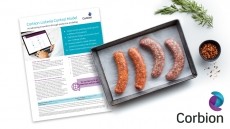Is the Italian market ready for meal kits?

HelloFresh is expanding its business to Italy, where the meal-kit category is still, unlike other markets like the UK, in its infancy. The Berlin-based business, which operates in the UK, US, Germany, the Netherlands, Belgium, Luxembourg, Australia, Austria, Switzerland, Canada, New Zealand, Sweden, France and Denmark, said this fact gives it the opportunity to establish and define the sector in a market of 26 million households. Around 75% of households will be served from the initial launch date, with plans to expand the offering in the short-term future.
Italy is obviously famed for its fierce tradition of gastronomic heritage. Take, for example, its railings against Nutri-Score, which it believes unfairly discriminates against its famous food delicacies such as olive oil, Parma ham and Parmigiano cheese, and ‘the principles of the Mediterranean diet’.
However, HelloFresh is confident its emphasis on sourcing local ingredients will allow it to successfully tap into Italian customers' tastes and habits. In Italy 100% of the chicken and beef in its meal kits is from Italy and the majority of its produce is grown locally.
Meanwhile, an Italian team of chefs, who are based in its office in Milan, will develop recipes based on Italian customers' tastes and habits. It is offering a range of regional and international recipes in its weekly meal kits, including traditional Italian dishes.
“We are excited to offer customers in Italy an inspiring and convenient alternative to shop and cook for dinner. By focusing on sustainability, alongside locally sourced, high quality ingredients and delicious recipes, we are providing them with a unique value proposition. We are looking forward to broadly establishing and leading the meal kit category in Italy," said Thomas Griesel, co-founder of HelloFresh.
“Italian cuisine is fantastic, which is why we are going to offer an exciting mix of traditional Italian recipes and a bespoke collection of HelloFresh recipes from 15 international markets. Our thorough analysis has shown that the Italian market is ready for meal kits and that the country offers great conditions to expand our total addressable market.”
Luca Bucchini, managing director of Hylobates Consulting, agreed meal-kits have legs in Italy. "I would say there is lots of potential. I think Italian consumers are generally depicted as very conservative when it comes to food, and it is partially true,” he said. “However, meal kits have already appeared in Italy and at least some Italian consumers do like to experiment. The stereotype is that Italians like to cook at home (and they do more than their Northern neighbours) but the growth in food delivery services shows that Italian consumers also like change.”
He added that sustainability is a key trend in Italy too.
The fact Italians cook more at home (Italian supermarkets typically have far less space devoted to ready to eat food than in other countries, particularly the UK or the US, Bucchini told us) could be a further draw for HelloFresh. Its meal kits come with pre-packaged fresh ingredients and cooking instructions and take typically 30 minutes to prepare.
“HelloFresh offers Italian customers an inspiring and convenient alternative to shop and cook for dinner,” a spokesperson told us. “We provide delicious dinners the whole family can enjoy while mixing up their routine and discovering new flavours. At the same time we put a lot of emphasis on ingredient quality by sourcing fresh ingredients from trusted local suppliers. Customers can enjoy their meal kits, knowing that sustainability is at the heart of our business. From day one all carbon emissions from HelloFresh’s production, offices and deliveries will be compensated and we will have 0% food waste to landfill by cooperating with a local food bank and a biogas processor.”
HelloFresh added it has localised the launch to the specific needs of Italian market, something it does in all its markets.
“Our global technology platform and innovative supply chain allow us to bring unique expertise to local markets,” the spokesperson explained. “For every market launch we then focus on making our product as local as possible. A lot of data-driven research goes into understanding what the local preferences are. Understanding the individual needs of our customers in 16 different markets allows us to offer them a unique value proposition.”




























